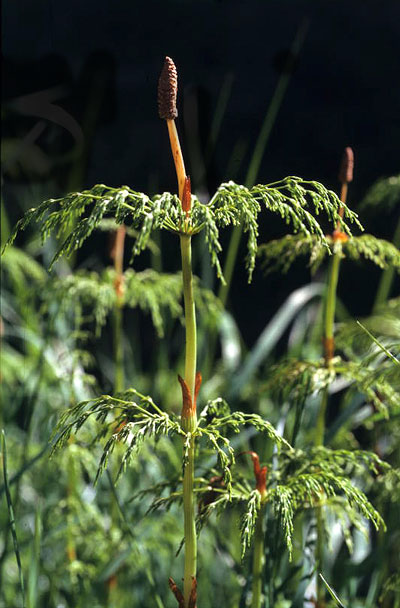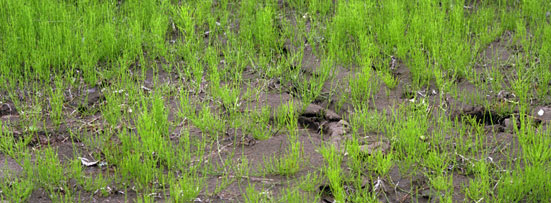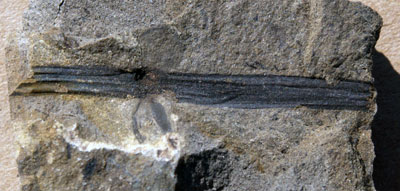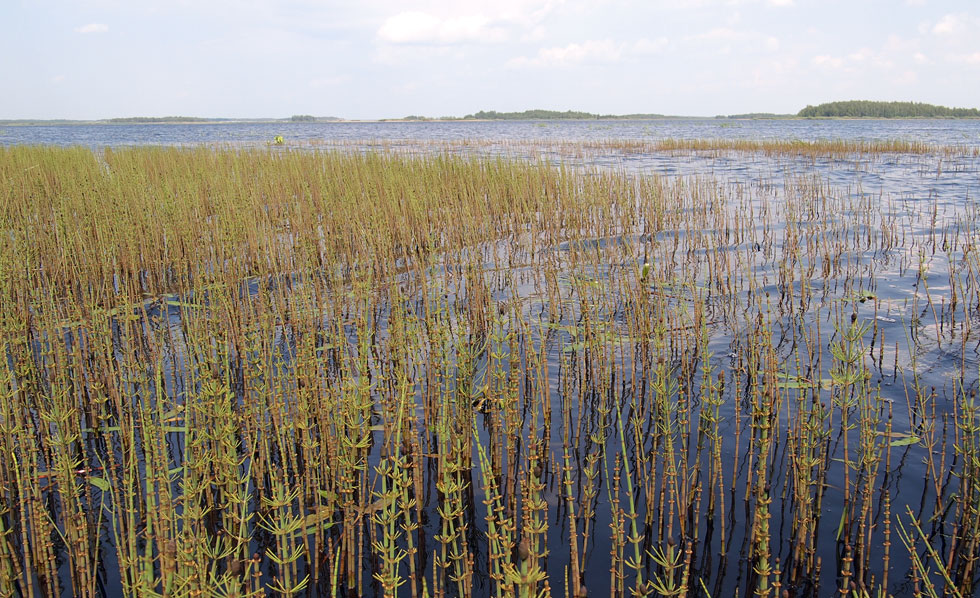Images - Arranged by Taxonomic Groups
| Angiosperms | Bryophytes | Caytoniales | Conifers | Cycadophytes | Ferns | Ginkgophytes | Leptostrobaleans |
|---|
| Lycophytes | Sphenophytes |
|---|
Sphenophytes |
Arctic Fossil Sphenophyte Images |
Modern sphenophytes all belong to the genus Equisetum. Common names for these plants are 'Horsetails', 'Mares Tails' or 'Scouring Rushes'. Fossil forms in the Cretaceous and Paleocene are either called Equisetites or sometimes (wrongly) Equisetum. Equisetites is used to distinguish the ancient forms from the modern ones, particularly because we do not have entire plants preserved and we have to reconstruct the ancient plants from just fragments. They may differ in some important, but not always obvious, ways from the living species. Sphenophytes reproduce by means of spores that they produce in specialised structures called cones or strobili. The spores are all of one size and germinate to form small flat green structures that look a little like liverworts. On these gemetophytes are produced either the male sperm producing structures or female egg containers. As to which type is produced depends on the light levels. If a female is not fertilised then in time it will produce male organs and will self fertilise. Another way Sphenophytes reproduce is by rhizome fragmentation. Rhizomes that break, for example when a river bank collapses, will float off downstream and may be washed up on a mudbank where they they take root and grow into a new plant. This combination of reproducing by making hundreds of thousands of spores each one of which could give rise to a new plant, or by vegetative regeneration of fragmented rhizomes, makes the sphenophytes very effective primary colonisers. In the Cretaceous Arctic they, together with ferns such as Birisia, make up most of the groundcover. Sphenophytes most likely provided a reliable food source for the herbivorous dinosaurs (e.g. the hadrosaurs), many of which developed the ability to replace teeth worn down by the silica phytoliths that are a common feature of sphenophytes.
|
 |
|
|---|---|---|
| Above - Equisetum showing the characteristic arrangement of branches and leaves in whorls and terminal cones that contains the spores. |
 |
Left - Young sporelings of Equisetum colonizing a mudbank at the side of the Kogosukruk River, Alaska.
Below - The fossilized rhizome of Equisetites showing nodules. |
|
| Remains of the underground stems (rhizomes) of Equisetites are very common in the fossil soils of the Cretaceous and Paleocene Arctic. So common that they undoubtedly, together with ferns, formed the dominant ground cover and were early colonisers of any exposed new ground. Such substrates are often poor in nitrogen and a characteristic feature of the rhizomes is that they bore nodules, that, as with modern Equisetum, housed nitrogen fixing bacteria so, in collaboration with the bacteria, Equisetites could extract nitrogen directly from the air trapped between soil particles and dissolved in groundwater. |  |

| Equisetum beds on the edge of a lake at Meschyora, Russia. Here they are both rooted in the lake sediments and forming floating mats. |
Click here for images of the fossil Sphenophyte specimens.
